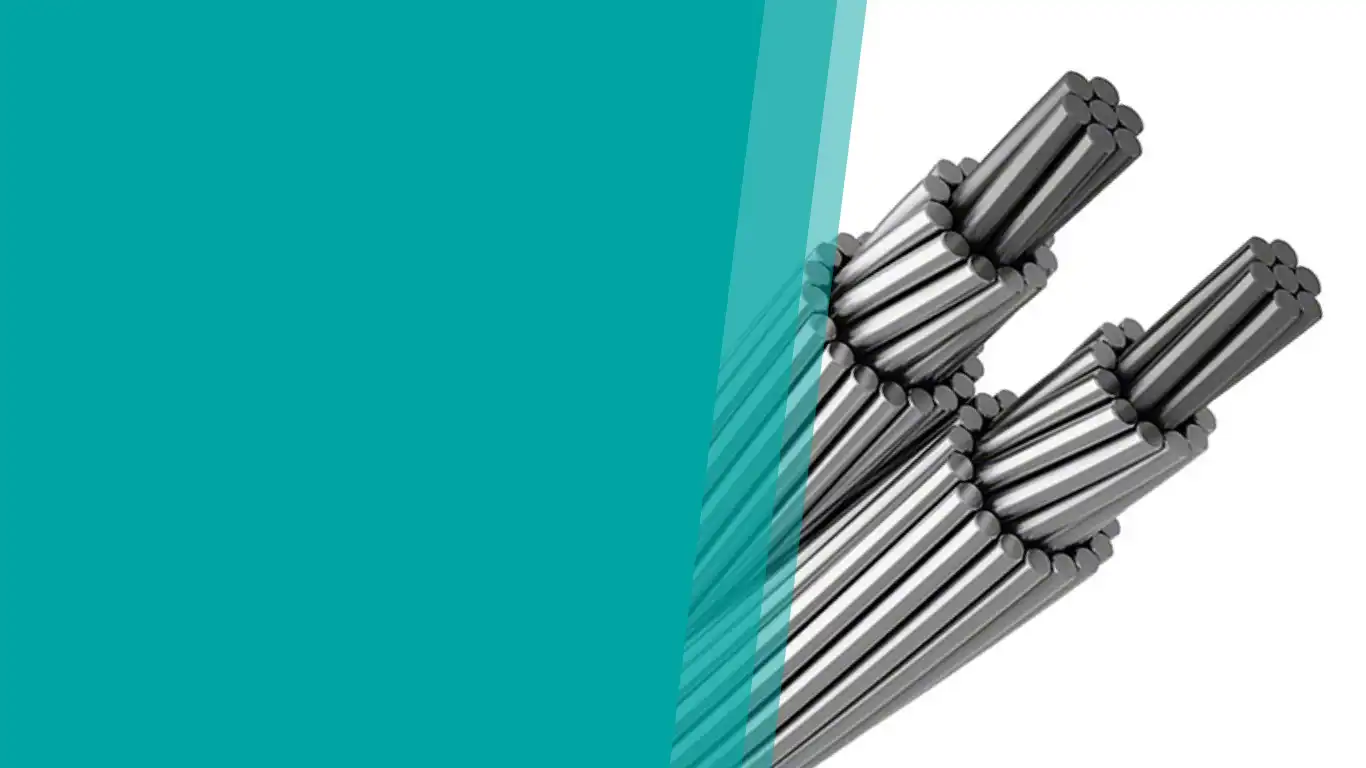
ACSR Conductor
ACSR Cable Manufacturer
TTF Power manufactures and supplies ACSR cable (Aluminum Conductor Steel Reinforced) for overhead power transmission and distribution networks. ACSR conductor is a type of electrical cable consisting of a central steel core surrounded by stranded aluminum conductors. The steel core provides the cable with additional strength and rigidity, while the aluminum conductors offer low weight and high conductivity.
ACSR cable is commonly used in overhead power transmission and distribution lines, where it can span long distances and carry large amounts of electrical current. The steel core provides the cable with the necessary mechanical strength to support its own weight and the weight of the conductors, while the aluminum conductors provide high conductivity and low resistance to the flow of electricity.
ACSR cable comes in a variety of sizes and configurations, depending on the specific requirements of the application. The cable is typically specified by its conductor size, the number of aluminum strands, and the diameter of the steel core.
Components of ACSR cable

ACSR cable typically consists of the following components:
- Steel Core: This is the central component of the cable and is made of high-tensile steel. The steel core provides the cable with the necessary mechanical strength to support its weight and the weight of the conductors.
- Aluminum Conductors: These are stranded conductors made of aluminum. The aluminum conductors provide high conductivity and low resistance to the flow of electricity.
- Zinc Coating: The aluminum conductors are typically coated with zinc to provide protection against corrosion.
- Grease: The cable may be filled with a special type of grease that helps to prevent the ingress of moisture and provides additional protection against corrosion.
- Optional Insulation: In some cases, the cable may be insulated with a layer of polymer material to provide additional electrical insulation.
- Optional Messenger Wire: A messenger wire may be included with the ACSR cable to provide additional mechanical support for the cable. The messenger wire is typically made of steel and runs parallel to the ACSR cable.
Cable variations
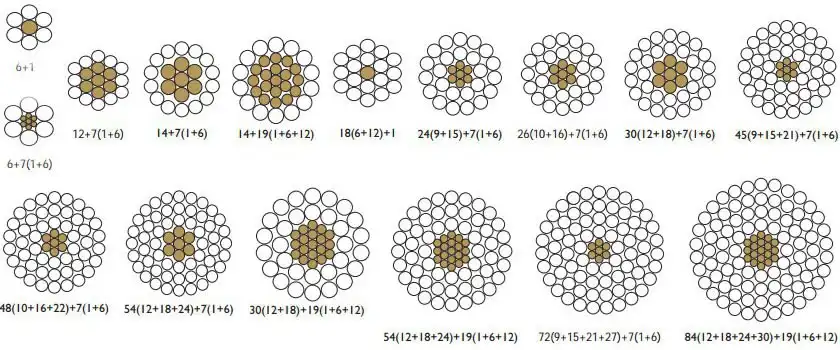
There are many different types of ACSR cables, each designed for specific applications. Some of the common types of ACSR cables are:
- Hawk: ACSR Hawk cable has a steel core surrounded by six aluminum strands. It is commonly used for overhead power transmission and distribution lines.
- Drake: ACSR Drake cable has a steel core surrounded by seven aluminum strands. It is often used for long-distance transmission lines and high-voltage distribution lines.
- Sparrow: ACSR Sparrow cable has a steel core surrounded by four aluminum strands. It is commonly used for overhead power lines in residential and commercial areas.
- Linnet: ACSR Linnet cable has a steel core surrounded by six aluminum strands. It is commonly used for overhead power transmission and distribution lines in urban areas.
- Tern: ACSR Tern cable has a steel core surrounded by twelve aluminum strands. It is often used for long-distance transmission lines and high-voltage distribution lines.
- Canary: ACSR Canary cable has a steel core surrounded by three aluminum strands. It is commonly used for overhead power lines in rural areas.
These are just a few examples of the many different types of ACSR cables that are available. The specific type of ACSR cable that is used depends on the specific requirements of the application, such as the voltage and current requirements, the distance that the cable needs to span, and the environmental conditions of the installation site.
Installation and maintenance
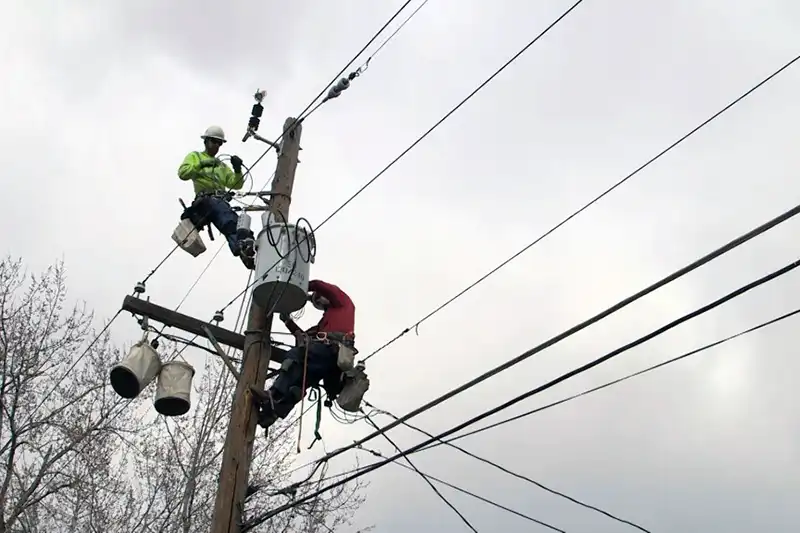
The installation of ACSR cable typically involves the following steps:
- Planning: Before installation, it is important to plan the routing of the cable and ensure that all safety requirements are met. This includes checking for overhead obstructions, determining the required tension for the cable, and ensuring that proper equipment is available.
- Preparing the cable: The ACSR cable should be inspected for any damage or defects before installation. If necessary, the cable should be cleaned, lubricated, and spliced or terminated as required.
- Installing support structures: The support structures, such as poles or towers, should be installed before the cable is pulled. The structures should be installed according to the manufacturer’s recommendations and local codes.
- Pulling the cable: The ACSR cable is typically pulled from one end of the installation to the other using a cable puller. The puller applies tension to the cable and pulls it through the support structures.
- Sagging the cable: After the cable has been pulled through the support structures, it is necessary to sag the cable to the proper tension. This is typically done by attaching weights to the cable at specific points to create the desired sag.
- Terminating the cable: Once the cable has been sagged to the proper tension, it can be terminated at each end using connectors or other termination methods. The terminations should be done according to the manufacturer’s recommendations and local codes.
- Testing: After installation is complete, the ACSR cable should be tested to ensure that it meets the required electrical and mechanical specifications. Testing typically involves measuring the resistance and continuity of the cable, as well as verifying that it can withstand the required tension and other mechanical loads.
General safety guidelines
ACSR cable can pose a safety risk when installed or maintained improperly. Here are some general safety guidelines to follow:
- Always wear appropriate personal protective equipment (PPE) when working with ACSR cable, including safety glasses, gloves, and appropriate clothing.
- Use appropriate tools and equipment when working with ACSR cable, and make sure they are in good condition and properly maintained.
- Ensure that the ACSR cable is properly supported and secured to prevent it from falling or swinging.
- Before working on ACSR cable, always de-energize the system and follow appropriate lockout/tagout procedures.
- When working on live ACSR cable, use appropriate safety equipment and follow appropriate safety procedures.
- Make sure that all ACSR cable splices and connections are properly made and secured to prevent electrical arcing and damage to the cable.
- Always follow appropriate safety procedures when working at heights, and use appropriate fall protection equipment when necessary.
These guidelines are not exhaustive and should be supplemented by any applicable safety regulations and guidelines specific to your industry and region. Always prioritize safety when working with ACSR cable, and seek guidance from experienced professionals when necessary.
Applications of ACSR cable
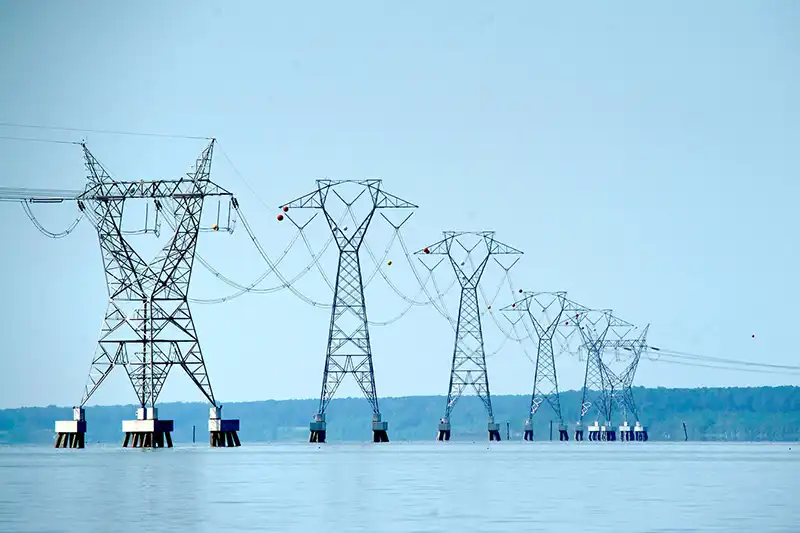
ACSR cable has a wide range of applications in electrical power transmission and distribution systems. Some of the common applications of ACSR cable include:
- Overhead Power Transmission Lines: ACSR cable is commonly used for overhead power transmission lines, which are used to transport electrical power over long distances.
- Overhead Distribution Lines: ACSR cable is also used for overhead distribution lines, which are used to distribute electrical power from transmission lines to homes and businesses.
- Substation Grounding: ACSR cable is used for substation grounding, which helps to protect electrical equipment from lightning strikes and other electrical surges.
- Guy Wires: ACSR cable is used as guy wires for utility poles, cell towers, and other tall structures to provide additional support and stability.
- River Crossings: ACSR cable can be used for river crossings, where it is suspended between two towers to transport electrical power across a river or other waterway.
- Industrial Applications: ACSR cable is also used in industrial applications, such as for overhead cranes, where it is used to transport electrical power and control signals.
These are just a few examples of the many applications of ACSR cable. The specific application of ACSR cable depends on the electrical and mechanical requirements of the system, as well as the environmental conditions of the installation site.
Pros and cons
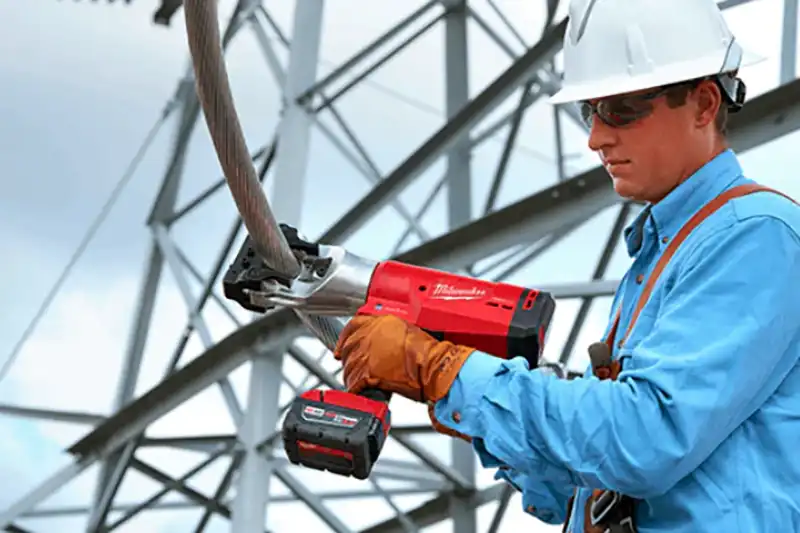
ACSR cable has several advantages and disadvantages. Here are some of the pros and cons of using ACSR cable:
Pros:
- High Strength: ACSR cable has high tensile strength due to the steel core, which allows it to support heavy loads over long spans.
- Good Conductor: The aluminum outer strands of the cable provide good electrical conductivity, which makes it an efficient conductor for electrical power.
- Corrosion Resistance: The aluminum strands of the cable are resistant to corrosion, which makes ACSR cable suitable for outdoor use in harsh environments.
- Long Lifespan: ACSR cable has a long lifespan and can last for several decades if properly installed and maintained.
- Cost-effective: ACSR cable is relatively cost-effective compared to other types of high-strength cables.
Cons:
- Heavy Weight: ACSR cable is heavy due to the steel core, which makes it difficult to install and requires heavier support structures.
- Low Resistance: ACSR cable has a relatively low resistance to high temperatures, which can limit its use in certain applications.
- Limited Flexibility: ACSR cable is less flexible compared to other types of cables, which can limit its use in applications where flexibility is required.
- Susceptible to Damage: ACSR cable can be susceptible to damage from environmental factors such as wind, ice, and lightning strikes.
- High Maintenance: ACSR cable requires regular maintenance to ensure that it remains in good condition and continues to perform optimally.
These are just a few of the pros and cons of ACSR cable, and the suitability of the cable for a particular application depends on the specific requirements of the system and the environmental conditions of the installation site.
How to select the best ACSR cable
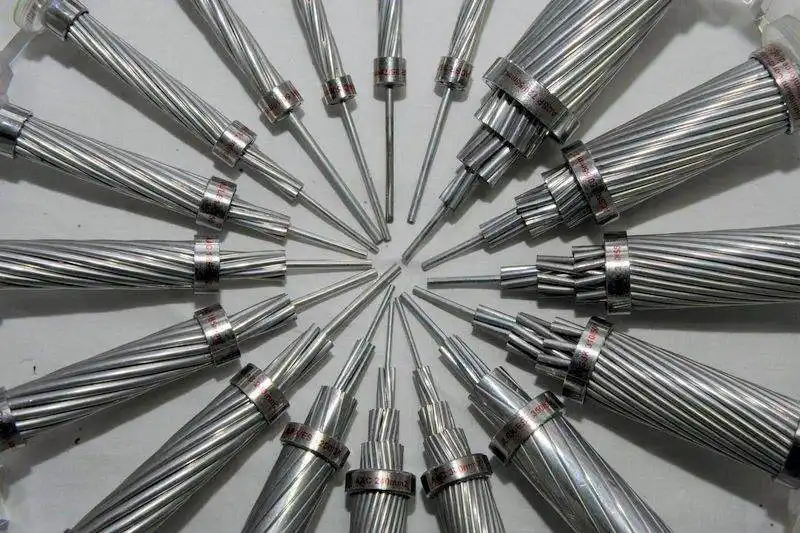
Choosing the best ACSR cable depends on several factors, including the electrical and mechanical requirements of the system, the environmental conditions of the installation site, and the cost of the cable. Here are some factors to consider when choosing the best ACSR cable:
- Electrical Requirements: The electrical requirements of the system, including the voltage, current, and power capacity, will determine the size and configuration of the ACSR cable required.
- Mechanical Requirements: The mechanical requirements of the system, including the required tension, sag, and load capacity, will determine the strength and size of the ACSR cable required.
- Environmental Conditions: The environmental conditions of the installation site, including temperature, humidity, wind, and corrosion, will determine the type of insulation, coating, and protective measures required for the ACSR cable.
- Manufacturer and Quality: It is important to choose a reputable manufacturer that produces high-quality ACSR cable that meets industry standards and regulatory requirements.
- Cost: The cost of the ACSR cable is an important factor to consider, but it should not be the sole determining factor. It is important to balance cost with quality and suitability for the application.
- Installation and Maintenance: The ease of installation and maintenance requirements of the ACSR cable should also be considered, as these factors can impact the overall cost and performance of the system.
By considering these factors, it is possible to choose the best ACSR cable for a particular application that will provide optimal performance and durability over the long term.
The industrial standards for ACSR cable vary by region, but some commonly used standards include ASTM B232, BS 215, IEC 61089, and AS 3607. These standards specify requirements for the design, construction, and testing of ACSR cable, as well as the materials, dimensions, and performance characteristics of the cable. Compliance with these standards ensures that ACSR cable meets industry requirements for quality, safety, and reliability.
FAQs
What is ACSR cable?
ACSR stands for Aluminum Conductor Steel Reinforced cable. It is a type of high-tensile cable used for overhead power transmission and distribution systems.
What are the components of ACSR cable?
ACSR cable consists of a central steel core surrounded by one or more layers of aluminum conductor strands. The steel core provides strength and support, while the aluminum conductor strands provide good electrical conductivity.
What are the advantages of ACSR cable?
ACSR cable has several advantages, including high strength, good conductor, corrosion resistance, long lifespan, and cost-effectiveness.
What are the disadvantages of ACSR cable?
ACSR cable has several disadvantages, including heavy weight, low resistance to high temperatures, limited flexibility, susceptibility to damage, and high maintenance requirements.
How do you choose the best ACSR cable?
The best ACSR cable for a particular application depends on several factors, including the electrical and mechanical requirements of the system, the environmental conditions of the installation site, the cost of the cable, and the ease of installation and maintenance requirements.
